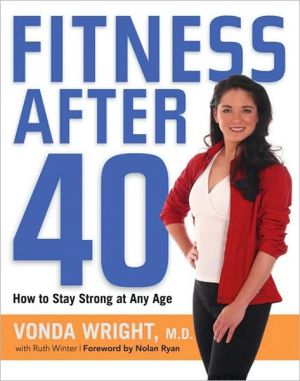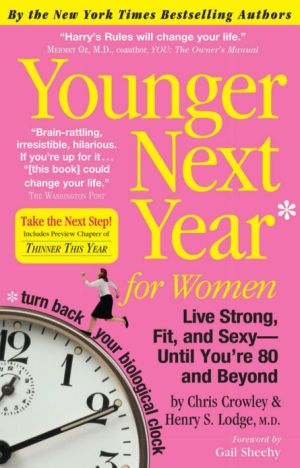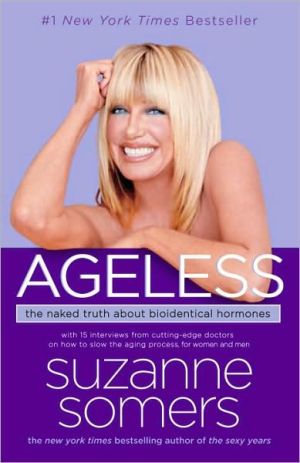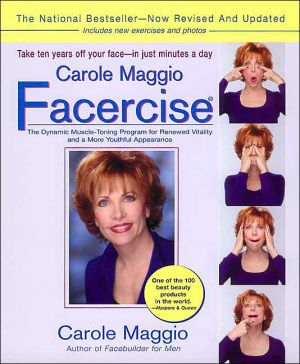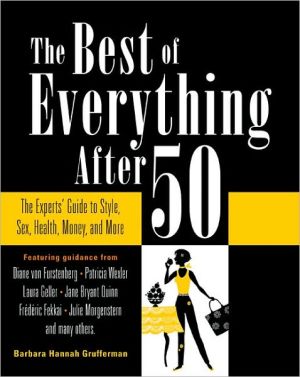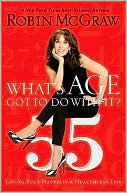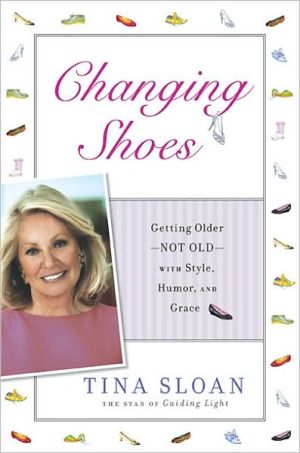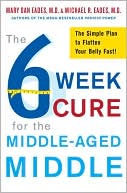Fitness After 40: How to Stay Strong at Any Age
It’s one of the undeniable facts of life. After we reach a certain age, our bodies change. No matter how fit we may have been at 20, we’re very different people after 40. But growing older doesn’t have to diminish our fitness level. The good news is that not only can we retain the vigor of our youth, we can actually perform as well, if not better, than ever. Dr. Vonda Wright is the creator of a unique medical program specifically designed to target the fitness and performance needs of mature...
Search in google:
Healthy, Vital, Active, Joyful! These are not words commonly used to describe getting older. Yet by focusing on exercising smarter, you can retain the vigor of youth and perform as well, if not better, while limiting injury. It is true. Our bodies change every year and we are different after 40 than when we were 20. But just because we’re not teenagers anymore doesn’t mean we can’t be strong, healthy, or vital. In Fitness After 40, Dr. Vonda Wright, an orthopaedic surgeon who specializes in sports medicine for people over 40, captures the advice, exercises, and injury prevention insights she gives her patients every day for getting healthy, staying trim, and taking fitness to the next level. It is like having your own doctor in the house. Dr. Wright is the creator of a unique exercise program (F.A.C.E.) specifically designed to target the fitness and performance needs of mature athletes. In Fitness After 40, she shows you how to implement flexibility, aerobic exercise and strength training to regain vigor, and look and feel better than ever. By following her proven program, you can learn to: understand your body and approach exercise and injury in a new way • make the most of your exercise routine during a busy week • hydrate and understand how to eat right • avoid injury to rotator cuffs, lower back, knees, and legs • maximize stretching, running, and weight training • as well as much more. Vonda Wright, M.D., is an orthopaedic surgeon, specializing in sports medicine, and the Director of PRIMA: the Performance and Research Initiative for Masters Athletes. She is a contributor to the New York Times, Wall Street Journal, Maxim, and many other periodicals, and has appeared on CNN, ABC-TV News, and in Newsweek and USA Today. She lives in Pittsburgh. Ruth Winter, M.S., is an award-winning science writer, and the author of 34 books including A Consumer’s Dictionary of Food Additives and A Consumer’s Dictionary of Cosmetic Ingredients. She lives in Short Hills, New Jersey. Praise for Fitness After 40: How to Stay Strong at Any Age “ . . . a must-read for everyone wanting to take control of their bodies through fitness.” — Freddie H. Fu, M.D., President of the American Orthopaedic Society for Sports Medicine; and Chairman, Department of Orthopaedic Surgery, University of Pittsburgh “Recommended . . . for all people with the desire to get back into the game and the practitioners who care for them.” — Marje Albohm, M.S., ATC, President of the National Athletic Trainers Association “ . . . great incentive and practice methods for setting and achieving fitness goals while minimizing injury.” — Roger Oxendale, CEO, Children’s Hospital of Pittsburgh of UPMC; and Ultramarathoner “ . . . excellent information about conditioning.” — Gloria Beim, M.D., Physician for the U.S. Track Cycling Team; and Physician for the U.S. Team at the 2004 Olympic Games in Athens “ . . . shows readers how it’s possible to put in place a safe, individual, and customized exercise program that doesn’t have to take up a lot of time.” — Jan Yager, Ph.D., sociologist, and author of Work Less, Do More: The 14-Day Productivity Makeover “ . . . helps readers not only look better on the outside, but feel better on the inside.” — Elisa Zied, M.S., R.D., CDN, registered dietitian and spokesperson for the American Dietetic Association; and American Council on Exercise certified personal trainer “Exercise is medicine. Dr. Wright delivers this concept in an exceptionally clear, fun, and realistic way.” — Marty Jaramillo, PT, “Physical Therapist and trainer to the stars”; Founder & CEO, I.C.E. Sports Physical Therapy; and co-author of Men’s Health Best Sports Injuries Handbook
I N T R O D U C T I O N\ I wrote this book with one goal in mind: to empower you in\ the best half of your life to take control of your body and master\ how it ages. No matter what your age or ability level, you were\ designed to move, and it is never too late to start. Now is the\ time to maximize your performance and fitness, whether this\ means simply taking your first steps off the couch or ramping\ up to win your race age division. Your tool is exercise and sound\ fitness principles. We want to keep you in the game if you are\ active or get you into the game now if you are not.\ If you have picked up this book, you are at least thinking\ about what living a fit life would be like. No more huffing and\ puffing on the stairs; no more longing for energy. You would feel\ vigorous and have the oomph to do the things you want, not to\ mention looking strong in your clothes. Living this life starts from\ the inside out, and the key is fitness through exercise.\ I want you to understand—before you think I am simply\ another workout cheerleader in an orthopaedist’s clothing—that\ I realize there can be real barriers on the road to healthy aging. I\ understand being busy, getting pulled in 20 directions at once,\ having family obligations, and dealing with financial constraints.\ I understand the dozens of other very logical (and some not so\ logical) reasons my patients offer up every day in my office. Here\ are some of the top excuses I’ve heard from my patients—and\ my replies:\ • “I run around all day. Isn’t that enough exercise?” No!\ Your heart rate must be elevated for a minimum of 30\ minutes a day.\ • “I can’t afford to exercise.” Turn off your cable and use the\ money to join a health club and watch TV there.\ • “I think about it all the time, but I don’t know where to\ begin.” Read this book and get up off the couch.\ • “We have a treadmill and an elliptical machine, but they are\ covered with clothes.” That is the most expensive clothes\ hanger I ever heard of. You know what to do.\ • “Even though I haven’t exercised in 20 years, I used to be a\ Navy SEAL and do incredible physical feats. I can’t bring\ myself to start exercising like a beginner.” After 20 years off,\ your body is like a beginner’s. Let’s go.\ • “The dog ate my sneakers . . .”\ One of my patients actually told me that his dog had eaten\ his sneakers when he’d run out of excuses for why he was still\ sitting on the couch. He was one of my favorite patients, and he\ said it with a straight face. For an instant, I considered him\ seriously before a smirk settled in and we both burst into\ laughter. He wanted to be one of those svelte older men who\ looked and felt younger than the age on his driver’s license, yet\ he had not made a move to get there. The truth is that 78\ percent of people over 50 years old cite exercise as the key to\ aging well, but only 28 percent are currently doing anything\ about it.\ No matter what your excuse or excuses may be, the fact\ remains that unless you take the time to invest in active aging\ now, it is likely that you will be forced to take the time to deal\ with illness in the future. Therefore, let’s just put some of the\ major exercise barriers out on the table and hash them out. The\ three most common exercise barriers in my patients are “couch\ addiction,” injury, and osteoarthritis.\ BARRIERS TO EXERCISE\ Couch addiction. Am I serious? Well, not entirely, and yet the\ habit of spending our lives as couch potatoes is a serious threat. I\ understand the issue, the lure of sinking into the soft sanctuary of\ the sofa after a hard day of work. In fact, during the beginning of\ my residency, I specifically bought my couch with napping in\ mind. At the local department store, I took flying leaps onto the\ laps of couch after couch, seeking the perfect place to take my\ naps. After 36-hour work days, my couch was the perfect relief.\ The problem is that too much of a good thing can kill you.\ According to some of our nation’s top physiologists, physical\ inactivity is a serious health threat and will lead to premature\ disability or death in more than 2.5 million Americans in the next\ ten years. There are 35 common diseases that are made worse\ if people are physically inactive, including diabetes, high blood\ pressure, heart disease, and stroke. In addition, women who\ spend two hours a day in front of the TV have a 23 percent\ greater chance of being obese compared to women who do not.\ I wish there was an easy way to tell you how to break the habit\ of spending hours every evening sitting on the couch watching\ TV. You simply have to make a real commitment to “just do it!”\ (as the Nike advertisement says). If you are a hopeless TV addict,\ then outsmart the problem and make your living room a home\ gym.\ Regarding other barriers to exercise, it is true that those of\ us over 40 who exercise, and even those who don’t, face the increased\ challenge of injury and arthritis. The number of people\ suffering from these problems is exceeded only by the products\ on the market promoting pain relief. Yet these two real and troublesome\ barriers to active aging do not have to be barriers at all.\ My entire career is about teaching athletes and active agers over\ 40 to be smarter as they avoid being sidelined. I not only treat\ their injuries but work with them to prevent injury and move\ past the aches and pains of arthritis. I look forward in the following\ chapters to sharing some of the information I give to my aspiring\ and inspiring patients.\ Fitness After 40, however, is not just about exercising: It is\ about awakening the champion—the winner—that is within\ you. It represents years of research (my own and that of other\ experts) that can mean the difference between simply letting the\ aging process master you as opposed to making the next 40\ years the best yet. Many of the commonly accepted stereotypes\ of aging are simply the effects of a sedentary lifestyle, not about\ real aging at all! Getting older does not mean being worse. Yes,\ there are changes. The truth is that no matter how fit you were\ at 20 years of age, there is a new you after age 40. You are simply\ not the same person you once were. However, not only can\ you still feel the strength and vigor of youth: You can perform\ nearly as well physically—and perhaps even better—than you\ did 10 or even 20 years ago.\ Based on my research with Senior Olympians and as director\ of PRIMA™ (Performance and Research Initiative for Master\ Athletes) at the UPMC Center for Sports Medicine, your best\ may be yet to come. Last week, a group of adult onset exercisers\ (AOEs)—formerly couch potatoes—finished participating in one of\ our 12-week exercise programs aimed at helping them get off the\ couch and finish a 5K walk/run. In our twice-weekly sessions, they\ received much of the same information found in this book. They\ exercised together twice a week and individually two to three\ times per week. To our joy, seven of the participants rose above\ their expectations of finishing the 5K race and actually medaled in\ their age divisions. Talk about feeling vigorous! There is nothing\ like raising the bar of your personal best to make you feel alive.\ These AOEs, like you, had the benefit of the experience and\ wisdom that comes with age. By putting aside their past excuses\ for not exercising, they took control and got into great shape.\ THE GOOD NEWS AND THE BAD\ There is good news and bad news when it comes to remaining or\ becoming active after age 40. The good news is that increasing\ numbers of people over 40 are seeking ways to remain youthful\ by exercising. A recent survey of baby boomers—those born between\ 1946 and 1964—conducted by ThermaCare Arthritis®, a\ company that sells a heat pack that becomes warm when\ applied to the skin, found:\ • 40 percent were living healthier lives and were more\ physically fit than when they were in their 20s\ • 67 percent felt 11 years younger than their chronological age\ • 57 percent reported being more physically active than their\ parents were at their age\ • 33 percent boasted that they could beat their children in at\ least one sport\ The people surveyed were either beginning to exercise for\ the first time (that is, they were AOEs) or were continuing\ programs they were already doing (active agers and athletes).\ The bad news is that as we age, our bodies change, and these\ changes mean we are more vulnerable to injury. Injury is the\ number one reason people stop being active and the number two\ reason (after the common cold) why people go to the doctor.\ These same baby boomer survey participants revealed that:\ • 67 percent suffer from muscle or joint pain weekly\ • 73 percent say muscle and joint pain is a bigger annoyance\ than making sure they remain physically active\ • 69 percent claimed that they were willing to work through\ their pain to remain active\ You will find as you go through this book that I don’t believe\ in the mantra “No pain—no gain.” My objective is to help you\ maximize your exercise efforts by smarter training while preventing\ the injuries that not only cause pain but keep you out of the\ game. If you do get hurt, I will give you tips on how to recover\ actively and without making things worse.
C O N T E N T SForeword by Nolan Ryan, xv Introduction, xix Acknowledgments, xxvii1 Healthy, Vital, Active, Joyful . . . You, 12 The New You! You Are Not Merely a Bad Sequel to Your 20-Year-Old Self, 93 F.A.C.E. Your Future of Active Aging, 354 F.A.C.E. Your Future Through F—Flexibility, 435 F.A.C.E. Your Future Through A—Aerobic Exercise, 656 F.A.C.E. Your Future by C—Carrying a Load, 937 F.A.C.E. Your Future by Keeping Your E—Equilibrium/ Balance, 1218 Wear, Tear, Repair, 1359 Healing with Steel, 16110 It’s a Waistline, Not a Wasteline: The Fuel and Fluid of Peak Performance, 17111 “In the Mouth of the Wolf”: Creating Your Mental Edge, 20112 When the Shoe Fits, Wear It, 21113 How to Choose a Gym and Personal Trainer, 21914 Onward! Putting a Plan Together, 227Glossary, 237 Further Resources, 243 Selected References, 253 Index, 257 About the Authors, 269
\ From the Publisher“…for anyone who hasn't been in the game for a while...gives you the tips and tools you need to get off of the couch and back in the race…definitely a motivational tool.” -- bookbargainsandpreviews.com\ \ \
